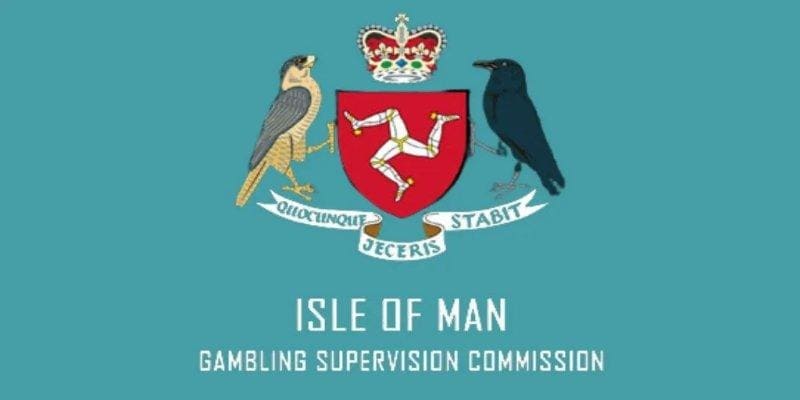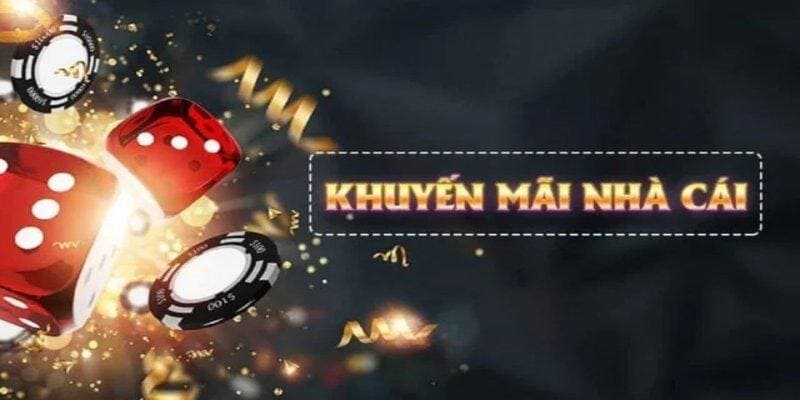🚨 ĐỪNG ĐỂ MẤT TÀI KHOẢN: Click nhầm link giả mạo có thể gây mất toàn bộ thông tin! Chỉ vào trang chính thức artemorbida.com để giao dịch an toàn.

artemorbida.com là ĐẠI LÝ ĐƯỢC XÁC NHẬN của GO88
⚠️‼️ Đừng nhấp vào các link không rõ nguồn gốc!
- Giftcode tân thủ: Nhận ngay 70K khi đăng ký.
- Thưởng mời bạn: Nhận 80K + 500 xu.
- Tích điểm đổi thưởng: Quy đổi điểm lấy tiền mặt.
- Hoàn cược 4%: Theo cấp bậc thành viên.
- Ưu đãi nạp lần đầu: 120%, tối đa 3 triệu VNĐ.
- Quà sinh nhật: Thưởng lên tới 2.5 triệu VNĐ.
Danh Sách Link Vào GO88 Mới Nhất MonthYear
| Link Go88 (Web) cho PC MonthYear | Link Nhà Cái go88 |
| Link Go88 (App) cho Android MonthYear | Link Vào go 88 |
| Link Go88 (App) cho iOS MonthYear | Link đăng nhập go88 |
| Link tải Go88 (App) cho APK MonthYear | Tại đây |
| Đường dẫn vào Go88 phiên bản web | Tại đây |
| Link tải Go88 cho Android | https://artemorbida.com//Android |
| Link tải Go88 cho iOS | https://artemorbida.com//iOS |
| Truy cập Go88 qua mạng Viettel | https://artemorbida.com//vi/Viettel |
| Truy cập Go88 qua mạng VNPT | https://artemorbida.com//vi/Vnpt |
| Truy cập Go88 qua mạng FPT | https://artemorbida.com//vi/Fpt |
| Truy cập Go88 qua Mobifone | https://artemorbida.com/vi/Mobiphone |
| Link vào Go88 trên Chrome | https://artemorbida.com//vi/Chrome |
| Link vào Go88 trên Safari | https://artemorbida.com//vi/Safari |
| Truy cập Go88 qua trình duyệt Browser | https://artemorbida.com//vi/Browser |
| Link Vào Go88 trên Cốc Cốc | https://artemorbida.com/vi/CocCoc |
| Truy cập Go88 trên Firefox | https://artemorbida.com//vi/Firefox |
| Truy cập Go88 khi ở ngoài lãnh thổ Việt Nam | https://artemorbida.com//Quoc-te |
Cập nhật tiên miền GO88 theo từng kỳ
| Tên Miền Cũ | Tên Miền Mới | Lý Do Thay Đổi |
|---|---|---|
| beyond-bedding.com (8/2024) | https://artemorbida.com/ (10/2024) | Cải tiến trải nghiệm game, tối đa hóa tốc độ truy cập. |
Điểm Danh 5 Nhà Cái Cung Cấp Game Bài Hấp Dẫn Nhất Dịp Tết Này
| Nhà Cái | Khuyến Mãi Sốc |
|---|---|
| Hit Club | – 200% tiền thưởng nạp lần đầu. – Lì xì đầu năm cho người chơi may mắn. – Cashback 50% hàng tuần. |
| DA88 | – 100% tiền thưởng nạp Tết. – Rút thưởng 5% khi chơi game. – Khuyến mãi slot lên đến 500K. |
| B52 Club | – 300% tiền thưởng nạp lần đầu. – Game thử may mắn nhận thưởng. – Hoàn tiền 100% cho cược thể thao thua. |
| iWin | – 200% tiền thưởng nạp đầu. – Cược miễn phí cho casino trực tuyến. – Thưởng vàng hàng tuần. |
| Sunwin | – 150% tiền thưởng nạp cuối năm. – Quay số trúng thưởng hấp dẫn. – Cashback 30% cho thua cược. |
Go88 2024 | Tải Go 88 +99 USDT | Game Bài Đẳng Cấp VN
Go 88 là một sự lựa chọn đáng tin cậy của nhiều anh em trong cộng đồng cá cược tại Việt Nam hiện nay với trải nghiệm trò chơi thú vị, cơ hội nhận thưởng hấp dẫn.
Hãy cùng tìm hiểu chi tiết thông tin về cổng game uy tín hàng đầu châu Á Go88 trong bài viết dưới đây anh em nhé.
Hướng dẫn Go88

Cách Xử Lý Go88 Rút Tiền Bị Từ Chối
Go88 từ lâu đã trở thành một sân chơi uy tín và được nhiều người tin dùng trong cộng đồng…

Hướng Dẫn Đăng Nhập GO88 – Trải Nghiệm Cổng Game Đỉnh Cao
Giới Thiệu Về Go88 Này anh em, hôm nay mình sẽ giới thiệu cho các bạn về Go88 – một…

Hướng Dẫn Chi Tiết Đăng Ký Tài Khoản Go88
Bạn đang tìm kiếm một sân chơi cá cược trực tuyến hấp dẫn? Go88 chính là lựa chọn hoàn hảo…
Go88 – Nền tảng cá cược đỉnh cao nhất hiện nay
Go88 là một cổng game trực tuyến đỉnh cao, lớn mạnh và uy tín bậc nhất hiện nay, là một thương hiệu đã quá quen thuộc với những anh em đam mê cờ bạc cá độ.
Thương hiệu uy tín được xây dựng trên nền tảng vững chắc của Vivo Gaming với cam kết mang lại những trải nghiệm chơi game hấp dẫn nhất.
Đồng thời, hệ thống cũng không ngừng nâng cấp và phát triển để đáp ứng mọi nhu cầu cá cược của cả cộng đồng.
Sân chơi đã luôn đạt vị thế hàng đầu hiện nay, luôn nằm trong top những cổng game bài đổi thưởng uy tín bậc nhất tại Việt Nam.
Go88 không chỉ là một điểm đến đầy tin cậy mà còn là biểu tượng của sự đẳng cấp và thăng hoa, mang ý nghĩa của sự thành công và phát triển.
Đơn vị hoạt động với mục tiêu để tạo nên một nền tảng giải trí cá cược trực tuyến đầy uy tín, chất lượng và công bằng cho mọi người chơi.
Go88 – Nền tảng cá cược đỉnh cao
Những ưu điểm nổi bật của cổng game giải trí uy tín Go88
Khi người chơi đến tham gia giải trí cá cược tại Go88 thì sẽ được trải nghiệm rất nhiều ưu điểm nổi bật, góp phần trong việc tạo dựng vị thế hàng đầu hiện nay.
Giao diện thiết kế ấn tượng
Khi truy cập vào trang chủ chính thức của hệ thống, người chơi sẽ phải bất ngờ trước giao diện của trang web được thiết kế vôi cùng chuyên nghiệp, thân thiện.
Nền tảng chú trọng đến tông màu vàng và đen cùng các chuyên mục được thiết kế vô cùng tính tế, có sự mới mẻ và kết hợp độc đáo.
Mục tiêu hàng đầu của sân chơi là đảm bảo được tốc độ, hiệu suất hoạt động vượt trội để tạo nên một môi trường cá cược mượt mà, thú vị.
Dựa vào công nghệ tiên tiến, hiện đại, website được thiết kế để đảm bảo về khả năng tương thích hoàn hảo với nhiều thiết bị khác nhau.
Từ điện thoại di động có hệ điều hành IOS, Android đến máy tính bảng, laptop cá nhân, bạn hoàn toàn có thể truy cập website linh hoạt, thoải mái, không bị giới hạn.

Đảm bảo tốc độ vượt trội
Kho game đa dạng và đầy cuốn hút
Thương hiệu luôn tự hào bởi sự đa dạng và phong phú với kho trò chơi vô cùng chất lượng của mình.
Nhằm đem đến cho các hội viên một địa chỉ giải trí ấn tượng, đáp ứng nhu cầu đam mê cá cược, cung cấp tất cả các tựa game từ truyền thống đến hiện đại.
Khi bạn trải nghiệm nơi đây thì sẽ được tận hưởng nhiều bàn chơi hấp dẫn, đa dạng nhất, menu phong phú.
Bao gồm như: game bài đổi thưởng, casino trực tuyến, thể thao, quay số, nổ hũ, bắn cá,….Tất cả đều được cập nhật liên tục, đem đến trải nghiệm tuyệt vời nhất.
Ngoài ra, hệ thống còn sở hữu một đội ngũ chuyên thiết kế game có kinh nghiệm, biết nắm bắt tâm lý khách hàng, nhu cầu thị trường cập nhật thêm sản phẩm game.
Uy tín và hợp pháp
Go88 là cổng game đổi thưởng xanh chín đạt chuẩn trong khung tiêu chuẩn quốc tế, hoạt động đúng theo quy định của pháp luật.
Nền tảng đã được cấp giấy phép của tổ chức First Cagayan và Isle of Man Gambling Supervision Commission.
Chứng tỏ đây là một địa chỉ đáng tin cậy, minh bạch và công bằng trên thị trường để người chơi có thể thoải mái giải trí cá cược săn tiền thưởng.

Uy tín và hợp pháp
Hệ thống bảo mật chất lượng
Nền tảng đã thực hiện kỹ thuật mã hoá dữ liệu đầu cuối ngay khi vừa mới tiếp nhận thông tin từ người chơi.
Tài khoản của mỗi thành viên đều được bảo vệ dữ kín tuyệt đối qua 3 lớp tường rào lửa mạnh mẽ, không có 1 kẽ hở cho hacker có thể xâm nhập được.
Ngoài ra, với công nghệ SSL 128 Bit mà sân chơi đã áp dụng cùng với trình duyệt bảo vệ tài khoản qua mã OTP chắc chắn sẽ cực kỳ an toàn, chắc chắn.
Người chơi khi đăng ký tài khoản cũng đã đều nhận được cam kết sẽ không có tiết lộ dữ liệu cho bất cứ bên thứ 3 nào khác chỉ trừ cổng game đổi thưởng.

Hệ thống bảo mật chất lượng
Giao dịch nạp rút tiền Go88 rõ ràng, minh bạch
Cổng game đã liên kết với rất nhiều hệ thống ngân hàng lớn hàng đầu trên cả nước như là: BIDV, Techcombank, VP Bank, TP Bank,..
Nhờ đó, người chơi có thể thoải mái để lựa chọn một phương thức giao dịch phù hợp nhất với mình mà không sợ mất nhiều thời gian.
Thao tác vô cùng đơn giản, quy trình nạp rút tiền được rút gọn để tiết kiệm thời gian, xử lý nhanh chóng để bạn dễ dàng tham gia cá cược.
Khi người chơi thực hiện quá trình rút tiền về tài khoản cá nhân của mình sẽ chỉ diễn ra từ 3-5 phút cực kỳ đơn giản và nhanh chóng, an toàn, minh bạch.

Giao dịch nạp rút tiền rõ ràng
Dịch vụ CSKH Go-88 vô cùng chuyên nghiệp, tận tâm
Lấy sự hài lòng của mọi thành viên làm trọng tâm, mục đích hoạt động, cổng game đã luôn chú trọng đến dịch vụ chăm sóc khách hàng, tư vấn khách hàng.
Hiện tại, hệ thống được mở 24/7, không ngừng nghỉ, do đó vào bất cứ khoảng thời gian nào trong ngày nếu như bạn có gặp vấn đề gì thì đều được giải đáp kịp thời.
Tất cả các chuyên viên tại Go88 đều được đào tạo chuyên môn bài bản, có kiến thức về cá cược, hiểu rõ các trò chơi và có kiến thức về CSKH.
Người chơi hoàn toàn có thể yên tâm liên hệ với cổng game bằng bất cứ hình thức nào từ: hotline, live chat, facebook, zalo, telegram,…đội ngũ sẽ nhiệt tình hỗ trợ.

Dịch vụ CSKH vô cùng chuyên nghiệp,
Tỷ lệ cược thưởng Go 88 cực kỳ hấp dẫn
Không chỉ người chơi được giải trí với kho game đa dạng, chất lượng mà còn được nhận liền tay nhiều khoản tiền lợi nhuận hấp dẫn nhất.
Rất nhiều người chơi chỉ bắt đầu với số vốn nhỏ mà sau một thời gian tham gia tại Go88 đã nâng cao số dư tài khoản lên mức đáng kể.
Tất cả là nhờ vào tỷ lệ cược thưởng siêu cạnh tranh mà cổng game đã mang đến cho người chơi, xanh chín và cực khủng trên thị trường hiện nay.
Vô vàn chương trình ưu đãi khuyến mãi cực khủng
Go88 thiên đường cờ bạc online đã không tiếc tiền đầu tư cho hàng loạt chương trình ưu đãi khuyến mãi tri ân đến cho tất cả người chơi.
Mỗi tháng, sân chơi đều tổ chức ít nhất là 10 sự kiện mới, mang đến những cơ hội để cho hội viên có thể tham gia rinh nhiều phần thưởng lớn.
- Ưu đãi tân thủ: Bạn sẽ nhận được ngay 50k miễn phí vào ngay tài khoản đăng ký mới, có nguồn tiền cược đầu tiên.
- Nạp thẻ thưởng nóng: Anh em sẽ được nhận ngay phần quà trị giá 50K khi nạp thẻ thành công.
- Nạp tiền khung giờ vàng: Chỉ cần bạn nạp tiền trong khung giờ vàng là sẽ có cơ hội rinh thưởng trị giá lên đến 1 triệu đồng cùng nhiều phần thưởng khác.
- Xem livestream: Chỉ cần người chơi tham gia livestream hàng ngày trên fanpage của Go88 sẽ có cơ hội nhận được nhiều giftcode, giao lưu cùng với nhiều hotgirl xinh đẹp.
- Hoàn cược siêu hấp dẫn lên đến 2% cho tất cả những sảnh chơi từ thể thao, casino, nổ hũ,…
Ngoài ra còn nhiều event khác không kém phần hấp dẫn như là: tặng quà sinh nhật, tri ân ngày lễ, thưởng thành viên VIP, điểm danh nhận thưởng,…

Vô vàn chương trình ưu đãi khuyến mãi
Ứng dụng mobile Go88 miễn phí
Kinh phí để đầu tư, xây dựng ứng dụng cá cược trên thiết bị điện thoại di động không hề nhỏ, kéo theo với đội ngũ nhân lực IT và quản lý.
Tuy nhiên, Go88 vẫn chấp nhận chi một số tiền không lợi nhuận nhằm cung cấp app miễn phí đến cho cộng đồng thành viên.
Ứng dụng hiện nay có tốc độ truy cập khá mượt mà, chiếm dung lượng nhỏ và có thể tương thích trên cả 2 hệ điều hành là IOS và Android.
Cho dù là phiên bản web hay là app thì đều là 1, hệ thống đã đồng bộ dữ liệu nên người chơi có thể hoàn toàn yên tâm để trải nghiệm giải trí.

Ứng dụng mobile miễn phí
Khám phá kho game cực khủng tại nền tảng cá cược Go88
Khi người chơi đến tham gia trải nghiệm giải trí cá cược sẽ được tận hưởng nhiều trò chơi hấp dẫn ăn tiền thật.
Theo thời gian, hệ thống cũng đã phát triển thêm nhiều trò chơi hấp dẫn khác, đáp ứng đa dạng nhu cầu của nhiều cược thủ hiện nay.
Cá cược thể thao lành mạnh
Ước tính trung bình mỗi ngày ở chuyên mục thể thao Go88 diễn ra rất nhiều sự kiện hấp dẫn khắp hành tinh.
Nút “Live” cho phép anh em có thể theo dõi trực tiếp trận đấu từ đường link chất lượng, âm thanh sống động cùng hình ảnh cực kỳ chân thực, sắc nét.
Người chơi sẽ thoải mái cá cược thể thao với danh sách các bộ môn cực kỳ hấp dẫn, trong làng thể thao có môn nào thì tại đây đều sẽ xuất hiện bảng kèo cá độ.
- Bộ môn hấp dẫn như: Bóng đá, bóng rổ, bóng chuyền, quyền anh, đấu kiếm, bida, bơi lội, golf, thể thao ảo, thể thao điện tử, quần vợt, đua ngựa,…
- Giải đấu: World Cup, Euro, Ngoại hạng Anh, NBA, FIFA, AFF Cup, V.League, Seagame,….
- Các loại kèo: Kèo châu Á, kèo châu Âu, kèo tài xỉu, tỷ số chính xác, kèo thẻ phạt, kèo phạt góc,…

Game bài đổi thưởng ấn tượng
Sảnh chơi được yêu thích nhất tại Go88 với lượng người truy cập, tham gia cá cược cực khủng đó chính là game bài đổi thưởng.
Các trò chơi đánh bài với đa dạng chủ đề, có tỷ lệ đổi thưởng cực kỳ hấp dẫn, đặc biệt sẽ có cơ hội săn tiền thưởng, thu lại lợi nhuận có giá trị khủng.
Những tựa game giải trí từ truyền thống đến hiện đại đều mang đến cho anh em những cảm giác thú vị, không hề nhàm chán.
Một số trò chơi game bài thú vị, có tỷ lệ cược thưởng vô cùng hấp dẫn, tỷ lệ xanh chín như: tiến lên miền Nam, Poker, phỏm, liêng, mậu binh, sâm, xì tố, sicbo,…
Sòng live casino
Đặc điểm hấp dẫn nhất tại sòng live casino Go88 chính là có dàn MC chuyên nghiệp, với những cô nàng sexy, hút hồn, theo 2 phong cách là: châu Á và châu Âu.
Anh em sẽ được trải nghiệm chân thực như là ở trong sòng bạc ngoài truyền thống với cảm giác căng thẳng và đầy kích thích.
Những ván bài 3D cùng âm thanh sống động như thật, có chất lượng siêu nét, đảm bảo vấn đề công khai, minh bạch khỏi lo về việc gian lận.
Nơi đây, anh em có thể tham gia giải trí đỉnh cao, giao lưu học hỏi kinh nghiệm với nhiều chuyên gia trong lĩnh vực.
Sòng live hot với nhiều tựa game đẳng cấp nhất hiện nay như là: tài xỉu, xóc đĩa, live casino,….
MC cũng được hỗ trợ bằng nhiều ngôn ngữ khác nhau, bao gồm có cả tiếng Việt để cho anh em thuận tiện theo dõi, tham gia đặt cược.

Sòng live casino hấp dẫn
Slot game Go88
Nền tảng luôn hiểu mong muốn của người chơi khi tham gia bắt đầu chơi cá cược slots game, chạm tay vào phần thưởng nổ hũ giá trị.
Chính vì thế, tiêu chí để chọn lọc các tựa game nổ hũ đỉnh cao là: kết quả hoàn toàn ngẫu nhiên và có tỷ lệ trúng thưởng Jackpot cao.
Kho slots game của Go88 đều có đa dạng nhiều biểu tượng game bài, cổ tích, thần thoại Hy Lạp, cuộc chiến viễn tưởng, thế giới chiến tranh,….
Một số tựa game hấp dẫn, thu hút nhiều anh em tham gia như là: Tây du ký, kho báu tứ linh, thần tài, ăn khế trả vàng, kho tàng ngũ long, cung hỷ phát tài,…
Tất cả những trò chơi đều được cung cấp bởi các nhà phát hành hàng đầu hiện nay, có giấy chứng nhận kiểm định như: JIJI, JDB, KA, PS, CQ9,….
Tỷ lệ RTP trung bình cực cao, trong khoảng 96%-97%, xác suất nổ hũ cũng cực cao, sẽ giúp bạn thu được một nguồn tiền thưởng giá trị, hấp dẫn.
Game quay số trúng lớn
Hình thức lô đề đá ăn sâu vào thói quen của rất nhiều lô thủ, đang dần bị thay thế bởi những sản phẩm quay số trực tuyến.
Tại sảnh game quay số lô đề trực tuyến tại thien duong tro choi Go88 mang đến cho anh em nhiều màu sắc mới, ngoài các hình thức xổ số quốc dân 3 miền Bắc – Trung – Nam còn có:
- Xổ số siêu tốc
- Xổ số VIP: Hà Nội và TP. Hồ Chí Minh.
- Keno.
- Lottery.
- Vietlott.
- Xổ số Thái Lan.
Xác suất để có thể dự đoán chính xác kết quả của mỗi phiên quay thưởng sẽ trung bình từ 80-90%.
Điều này cũng khá dễ hiểu bởi hệ thống đã được đầu tư cực kỳ phong phú, dễ soi cầu như là: bao lô, đánh đề, đánh đuôi, lô xiên, lô trượt,….
Mini game đặc sắc, hấp dẫn
Để thêm phần thú vị thì tại sân chơi còn cung cấp cho anh em nhiều trò chơi mini game cực kỳ đặc sắc như là: Tài xỉu Go88, mini poker, bầu cua, kim cương,…
Hàng loạt phần thưởng cực bất ngờ, có giá trị khủng dành tặng đến cho người chiến thắng, cách chơi cũng khá đơn giản nên anh em hoàn toàn có thể yên tâm.
Hướng dẫn thao tác đăng ký tài khoản Go88
Những bước để tạo tài khoản tại Go88 cực kỳ dễ dàng, chỉ cần anh em thực hiện đúng theo những thao tác sau đây là sẽ chắc chắn làm được.
- Bước 1: Để có thể tạo tài khoản, tham gia cá cược chính thức tại nền tảng thì anh em cần phải truy cập vào đường link chính chủ.
- Bước 2: Sau khi truy cập vào trang chủ chính thức của cổng game thì thì hãy ấn vào mục “Đăng ký”, hệ thống sẽ đề xuất một form cho bạn điền thông tin.
Một số thông tin cần điền như: tên đăng nhập, mật khẩu, họ tên, số điện thoại, mã xác minh,….
- Bước 3: Anh em hãy kiểm tra lại toàn bộ dữ liệu thông tin đã điền, sau đó ấn đồng ý vào ô “đã đủ 18 tuổi và đồng ý với chính sách”, sau đó thì ấn nút “Đăng ký” và hoàn tất quá trình.

Hướng dẫn các bước đăng nhập tài khoản Go88 cực chi tiết
Người chơi chỉ cần 3 bước đơn giản sau đây là có thể đăng nhập thành công tài khoản cá cược của mình.
- Bước 1: Đầu tiên, người chơi chỉ cần đảm bảo truy cập đúng đường link đúng như khi đăng ký, tránh tình trạng lừa đảo, đánh cắp thông tin.
- Bước 2: Ngay tại giao diện website, bạn hãy click vào chuyên mục “Đăng nhập”, sẽ hiện một form để bạn điền đầy đủ thông tin về tên đăng nhập, mật khẩu và xác nhận mật khẩu.
- Bước 3: Phải kiểm tra toàn bộ thông tin đã điền trước khi bấm đăng nhập, để tránh khi điền sai thì thông tin sẽ được hệ thống yêu cầu lại lần nữa.
- Bước 4: Với trường hợp mà bạn quên mật khẩu thì đừng quá lo lắng, hãy liên hệ với bộ phận CSKH sẽ được đội ngũ tư vấn hỗ trợ lấy lại mật khẩu.

Quy trình nạp tiền Go88 đơn giản với nhiều phương thức
Nạp tiền tại Go88 có rất nhiều cách thức khác nhau để cho anh em có thể lựa chọn, mỗi phương thức đều sẽ có các ưu điểm riêng tuỳ vào từng mục đích mỗi người.
Nạp tiền Go88 Vip qua chuyển khoản ngân hàng
Thanh toán ngân hàng là một kênh giao dịch phổ biến hiện nay, được nhiều người ưa chuộng nhất.
- Bước 1: Người chơi hãy chọn đúng đường dẫn truy cập chính thức, tại giao diện hãy chọn “Nạp tiền” -> “Ngân hàng”.
- Bước 2: Tại chuyên mục đó, anh em hãy chọn tên ngân hàng theo danh sách hệ thống cung cấp, thông tin chuyển khoản cần đầy đủ về: số tài khoản, tên, chi nhánh.
- Bước 3: Anh em chỉ cần chọn 1 trong 3 hình thức là: Internet banking, quầy giao dịch hoặc là ATM.
- Bước 4: Sau khi đã chuyển tiền thành công thì điền những thông tin theo yêu cầu của hệ thống, như: phương thức, số tiền, người gửi, ghi chú.
- Bước 5: Kiểm tra lại toàn bộ thông tin chính xác nhất thì mới bấm vào nạp tiền để hệ thống xử lý giao dịch, chuyển tiền vào tài khoản của bet thủ.

Nạp tiền Go88 qua Code Pay
Code Pay là một hình thức thanh toán nạp tiền cũng được rất nhiều anh em lựa chọn, chi tiết các giao dịch cụ thể như sau:
- Bước 1: Người chơi hãy truy cập chính xác vào đường link trang chủ của cổng game, đăng nhập tài khoản và chọn nạp tiền/Code Pay.
- Bước 2: Anh em hãy điền đầy đủ thông tin cần chuyển khoản như: Số tài khoản, tên và chi nhánh.
- Bước 3: Bet thủ hãy nạp tiền đúng theo thông tin được cung cấp, Code Pay chỉ áp dụng khi chuyển tiền Internet Banking hoặc quét mã QR.
Hướng dẫn nạp tiền quay kênh 1 Pay
Tiếp theo là hình thức nạp tiền quay 1 Pay cực kỳ nhanh gọn, chỉ trong vòng 30s. bạn hãy lưu ý hãy nạp rút chính chủ để hệ thống xử lý nhanh hơn.
Hơn thế, hình thức này cũng yêu cầu tài khoản phải đăng ký dịch vụ Internet Banking, mã OTP sẽ được ngay về số điện thoại đăng ký của bạn.
Nạp tiền Go88 qua kênh thanh toán tiền ảo
Một hình thức khá mới lạ tại cổng game đó là bạn có quyền nạp tiền vào tài khoản bằng kênh tiền ảo.
- Bước 1: Đầu tiên, người chơi hãy truy cập vào cổng game, đăng nhập tài khoản, tại giao diện thì chọn vào Nạp tiền/ Tiền ảo.
- Bước 2: Hệ thống hỗ trợ các loại tiền ảo 1 USDT = 25.066$, bạn chỉ chuyển đúng số tiền ảo vào tài khoản của trang cược.
Hình thức thanh toán thẻ cào
Thẻ cào được coi là một hình thức nạp tiền khá quen thuộc với rất nhiều nền tảng game đổi thưởng bởi vì tính đơn giản, nhanh gọn lẹ.
- Bước 1: Người chơi hãy truy cập vào trang web chính thức của cổng game, đăng nhập tài khoản và lựa chọn vào chuyên mục “Nạp tiền/ Thẻ cào”.
- Bước 2: Bạn hãy chọn nhà mạng mà Go88 cung cấp như: Viettel, Mobifone, Vinaphone và Vietnamobile, lưu ý bảng quy đổi mệnh giá thẻ nạp.
- Bước 3: Anh em hãy điền đầy đủ số seri, mã thẻ cào chính xác nhất nếu không thì hệ thống sẽ không chịu trách nhiệm, cuối cùng chỉ cần bấm nạp tiền và chờ xử lý dữ liệu.

Hướng dẫn các thao tác rút tiền Go88 chi tiết nhất
Để thực hiện giao dịch rút tiền thành công thì người chơi hãy làm theo các bước chi tiết đúng với hướng dẫn như sau:
- Bước 1: Đầu tiên, bet thủ cần phải truy cập vào tài khoản game của mình tại website chính thức của cổng game, tiến hành đăng nhập
- Bước 2: Sau khi đăng nhập tài khoản thành công thì bet thủ cần phải lựa chọn hình thức rút tiền, với nhiều phương thức đa dạng như: ví điện tử, ngân hàng, tiền ảo, thẻ cào,…
- Bước 3: Sau đó, cược thủ phải điền đầy đủ thông tin về số tiền mình muốn rút cùng với những chi tiết khác liên quan, đảm bảo chính xác nhất.
- Bước 4: Sau khi đã hoàn thành, bet thủ chỉ cần đợi xác nhận từ hệ thống, số tiền sẽ được chuyển vào tài khoản theo đúng phương thức thanh toán đã chọn.
Hướng dẫn tải app Go88 cực nhanh chóng
Khi anh em tải ứng dụng sẽ có cơ hội chinh phục trò chơi mọi lúc mọi nơi, tham gia cá cược nhanh chóng và tiện lợi.
Tải app Go88 cho thiết bị điện thoại hệ điều hành Android
Với người chơi nào đang sử dụng dòng điện thoại như: Oppo, Xiaomi, Samsung,… thì tham khảo các thao tác tải ứng dụng với hệ điều hành Android như sau:
- Bước 1: Mở trình duyệt và truy cập đúng theo link chính thức trang chủ của Go88.
- Bước 2: Tìm kiếm phần “Download” hoặc là link tải Go88 trên trang web, chọn biểu tượng Android để tải tệp cài đặt ứng dụng thường có định dạng APK
- Bước 3: Sau khi tải xong, vào phần thông báo hoặc thư mục “Download” trên thiết bị và sau đó mở tệp.
- Bước 4: Nếu thiết bị của bet thủ chặn cài đặt từ nguồn không xác định, vào “Settings” -> “Security”, bật tùy chọn “Unknown sources”, tiếp đó nhấn “Install” để bắt đầu cài đặt.
- Bước 5: Khi cài đặt hoàn tất, mở ứng dụng từ màn hình chính, đăng nhập vào tài khoản cá cược, nếu chưa có tài khoản, chọn “Register” và làm theo hướng dẫn tạo tài khoản mới.
Tải app Go88 cho thiết bị điện thoại hệ điều hành iOS
Ngoài việc tải app Go88 trên hệ điều hành Android thì việc tải iOS cũng giúp bạn tận hưởng trọn vẹn các sản phẩm cược trực tuyến, thao tác thực hiện đơn giản như sau:
- Bước 1: Truy cập chính xác trang chủ nền tảng, sao chép đường link chính thức, dán vào ô tìm kiếm trên Safari hoặc là gõ “Go88” vào thanh tìm kiếm.
- Bước 2: Vào mục cài đặt trên iPhone, hãy tìm phần tiện ích, nhấn vào liên kết tải xuống ứng dụng, chọn tùy chọn cho phép cài đặt ứng dụng, nhấn “Đồng ý” khi được yêu cầu.
- Bước 3: Khi xuất hiện thông báo về tính tin cậy của ứng dụng, chọn “Tin cậy” và đồng ý để tiếp tục.
- Bước 4: Sau khi hoàn tất các bước, quay về màn hình chính của điện thoại, ứng dụng xuất hiện và bet thủ chỉ cần chạm vào biểu tượng để trải nghiệm.
Một số hình thức liên hệ hỗ trợ Go88
Hiện tại, cổng game đã có bộ phận chăm sóc khách hàng hoạt động 24/7 vì thế mọi sự cố đều được xử lý nhanh chóng, bất kể lúc nào ngay cả dịp lễ tết.
Ngay tại giao diện, bet thủ sẽ thấy có 4 kênh liên hệ chính, tuỳ vào từng điều kiện để lựa chọn phương thức phù hợp nhất cho mình.
- Live chat: Tính năng chat trực tuyến, hoạt động 24/7 ngay tại trang web giúp cho bạn an tâm nhận tư vấn hỗ trợ mọi lúc mọi nơi, cực nhanh chóng.
- Hotline: Hotline cũng là một cách khá phổ biến, dễ áp dụng, có thể liên hệ ngay lập tức với bộ phận CSKH, tuy nhiên bạn sẽ mất một khoản cước nhỏ.
- Ứng dụng Telegram: Hình thức này khá tiện lợi, chỉ cần bạn tải ứng dụng Telegram, nhắn tin liên hệ, trình bày vấn đề của mình sẽ được hỗ trợ ngay.
- Facebook: Chắc chắn facebook sẽ là kênh liên lạc được nhiều anh em tìm kiếm, bạn có thể gửi qua messenger những vấn đề mình gặp phải để được giải quyết.
- Email: Là một hình thức cũng được nhiều người ưa chuộng bởi nếu có khiếu nại hay giải quyết vấn đề cần hình ảnh, thông tin xác thực.
Đánh giá từ những người chơi đã và đang cá cược tại Go88
Hiện tại, cổng game nhận được rất nhiều phản hồi, đánh giá từ cộng đồng cược thủ đã và đang tham gia cá cược.
Nhiều anh em cảm thấy hài lòng bởi đội ngũ chăm sóc khách hàng cực kỳ chuyên nghiệp và tận tâm, luôn giải đáp vấn đề của người chơi.
Nhiều anh em cảm thấy cực kỳ ấn tượng bởi cổng game có nhiều trò chơi hấp dẫn, tỷ lệ xanh chín, cơ hội nhận tiền thật hấp dẫn.
Dưới đây là một số phản hồi thực tế mà nhiều bet thủ đã để lại bình luận ngay tại website:
- Anh Hoàng Minh Đức ( 28 tuổi, Hoà Bình): “Tôi cảm thấy hài lòng bởi chất lượng dịch vụ cá cược cùng với đa dạng trò chơi hấp dẫn cho tôi trải nghiệm”.
- Anh Nguyễn Bảo Long (37 tuổi, Kiên Giang): “Tôi gắn bó với cổng game được gần 3 năm và thấy thích thú nhất bởi sự cuốn hút của từng trò chơi”.
- Anh Cao Minh Triết (32 tuổi, Hồ Chí Minh): “Tôi được bạn bè giới thiệu đến Go88 và cực kỳ bất ngờ bởi tỷ lệ xác suất trúng thưởng, tôi đã kiếm được rất nhiều tiền”.
FAQ Go88 thường gặp mới nhất 2024
Sau đây là một số câu hỏi thường gặp được nhiều anh em hỏi nhất, sẽ được cổng game trả lời chi tiết như sau:
Số tài khoản cá cược của mỗi bet thủ là bao nhiêu?
Hiện nay, thương hiệu đã có quy định rõ ràng về việc mỗi người chỉ được lập duy nhất 1 tài khoản cá cược với thông tin chính xác, chính chủ.
Nếu như có bất cứ anh em cược thủ nào vi phạm lập quá nhiều tài khoản game sẽ bị khoá nick ngay lập tức.
Nên dùng thiết bị nào để cá cược thành công?
Hiện nay, nền tảng đã hỗ trợ anh em tham gia chơi và đặt cược với nhiều thiết bị điện tử thông dụng, như là: máy tính, laptop, điện thoại di động.
Cho dù anh em có trải nghiệm ở bất cứ thiết bị nào đi chăng nữa đều sẽ được đảm bảo về sự mượt mà, không có bị giật lag, cực kỳ ổn định.
Có mất phí thanh toán không?
Hiện tại, cổng game miễn phí mọi giao dịch nạp rút cho toàn bộ hội viên, nếu có thì sẽ chỉ áp dụng cho các trường hợp ngân hàng có tính phí, phải trả một khoản nhất định.
Phải làm thế nào khi website Go88 bị lỗi?
Nếu như trang web bị lỗi thì thường sẽ xuất phát từ những nguyên nhân cơ bản như sau:
- Do lượng người truy cập vào giờ cao điểm quá lớn nên trang web bị lỗi tạm thời, bạn hãy chờ vài phút sau đó thì chỉ cần tiến hành đăng nhập lại.
- Nhà mạng Việt Nam đã chặn link truy cập, anh em hãy tìm kiếm link dự phòng để đảm bảo an toàn khi truy cập, tránh dùng link lạ sẽ bị đánh cắp thông tin.
- Hệ thống website đang được bảo trì, sẽ được thông báo chính thức ngay trên trang web chính thức trước đó, nên bet thủ hãy đợi quá trình hoàn tất rồi đăng nhập lại..
Có bảo mật an toàn không?
Hệ thống bảo mật của cổng game cực kỳ an toàn, thực hiện đúng theo quy chuẩn quốc tế SSL-128 Bit và được đặt máy chủ ở nhiều quốc gia và vùng lãnh thổ khác nhau.
Điều này để phục vụ chuyên biệt cho những thành viên tại các quốc gia khác nhau, làm giảm các rủi ro liên quan đến server hay là các lỗi do Ddos.
Đội ngũ an ninh kỹ thuật của trang cược đều kiểm tra thường xuyên, backup dữ liệu theo định kỳ nên đảm bảo thông tin an toàn tuyệt đối cho bạn.
Tại sao tài khoản Go88 vin bị khoá?
Có thể là do bạn đã vi phạm, gian lận, bet thủ cần phải liên hệ ngay cho phía đội ngũ tư vấn, chăm sóc khách hàng để xác minh, làm rõ vấn đề, giải quyết ngay tức khắc.
Kết luận
Trên đây là đầy đủ những thông tin chi tiết nhất giới thiệu cho anh em về trang chủ website cổng game cá cược trực tuyến uy tín hàng đầu hiện nay Go88.
Giờ thì bet thủ còn chần chừ gì nữa mà không nhanh tay truy cập vào website, đăng ký tài khoản game, tham gia trải nghiệm và rinh về nhiều phần thưởng lớn.
Tổng hợp đánh giá của người chơi tại Go88
Người chơi: Lê Tuấn Kiệt
Mình thích Go88 vì tính năng nạp rút tiền rất nhanh chóng và tiện lợi, đảm bảo an toàn tuyệt đối.
Người chơi: Nguyễn Thị Lan Hương
Go88 cung cấp nhiều trò chơi đa dạng, từ bài bạc đến slot, đều rất thú vị và công bằng.
Người chơi: Bùi Thị Lan
Go88 có giao diện rất thân thiện và dễ sử dụng. Trải nghiệm chơi game tại đây rất mượt mà và hấp dẫn.
Người chơi: Phạm Quốc Anh
Mình rất ấn tượng với dịch vụ hỗ trợ khách hàng của Go88, luôn sẵn sàng giúp đỡ khi mình gặp vấn đề.
Tổng hợp đánh giá của người chơi tại Go88
Số tài khoản cá cược của mỗi bet thủ là bao nhiêu?
Hiện nay, thương hiệu đã có quy định rõ ràng về việc mỗi người chỉ được lập duy nhất 1 tài khoản cá cược với thông tin chính xác, chính chủ.
Nếu như có bất cứ anh em cược thủ nào vi phạm lập quá nhiều tài khoản game sẽ bị khoá nick ngay lập tức.
Nên dùng thiết bị nào để cá cược thành công?
Hiện nay, nền tảng đã hỗ trợ anh em tham gia chơi và đặt cược với nhiều thiết bị điện tử thông dụng, như là: máy tính, laptop, điện thoại di động.
Cho dù anh em có trải nghiệm ở bất cứ thiết bị nào đi chăng nữa đều sẽ được đảm bảo về sự mượt mà, không có bị giật lag, cực kỳ ổn định.
Có mất phí thanh toán không?
Hiện tại, cổng game miễn phí mọi giao dịch nạp rút cho toàn bộ hội viên, nếu có thì sẽ chỉ áp dụng cho các trường hợp ngân hàng có tính phí, phải trả một khoản nhất định.
Phải làm thế nào khi website Go88 bị lỗi?
Nếu như trang web bị lỗi thì thường sẽ xuất phát từ những nguyên nhân cơ bản như sau:
Hệ thống website đang được bảo trì, sẽ được thông báo chính thức ngay trên trang web chính thức trước đó, nên bet thủ hãy đợi quá trình hoàn tất rồi đăng nhập lại.
Do lượng người truy cập vào giờ cao điểm quá lớn nên trang web bị lỗi tạm thời, bạn hãy chờ vài phút sau đó thì chỉ cần tiến hành đăng nhập lại.
Nhà mạng Việt Nam đã chặn link truy cập, anh em hãy tìm kiếm link dự phòng để đảm bảo an toàn khi truy cập, tránh dùng link lạ sẽ bị đánh cắp thông tin.
Nội dung mới nhất

Cách Xử Lý Go88 Rút Tiền Bị Từ Chối
Go88 từ lâu đã trở thành một sân chơi uy tín và được nhiều người tin dùng trong cộng đồng…

Hướng Dẫn Đăng Nhập GO88 – Trải Nghiệm Cổng Game Đỉnh Cao
Giới Thiệu Về Go88 Này anh em, hôm nay mình sẽ giới thiệu cho các bạn về Go88 – một…

Hướng Dẫn Chi Tiết Đăng Ký Tài Khoản Go88
Bạn đang tìm kiếm một sân chơi cá cược trực tuyến hấp dẫn? Go88 chính là lựa chọn hoàn hảo…


